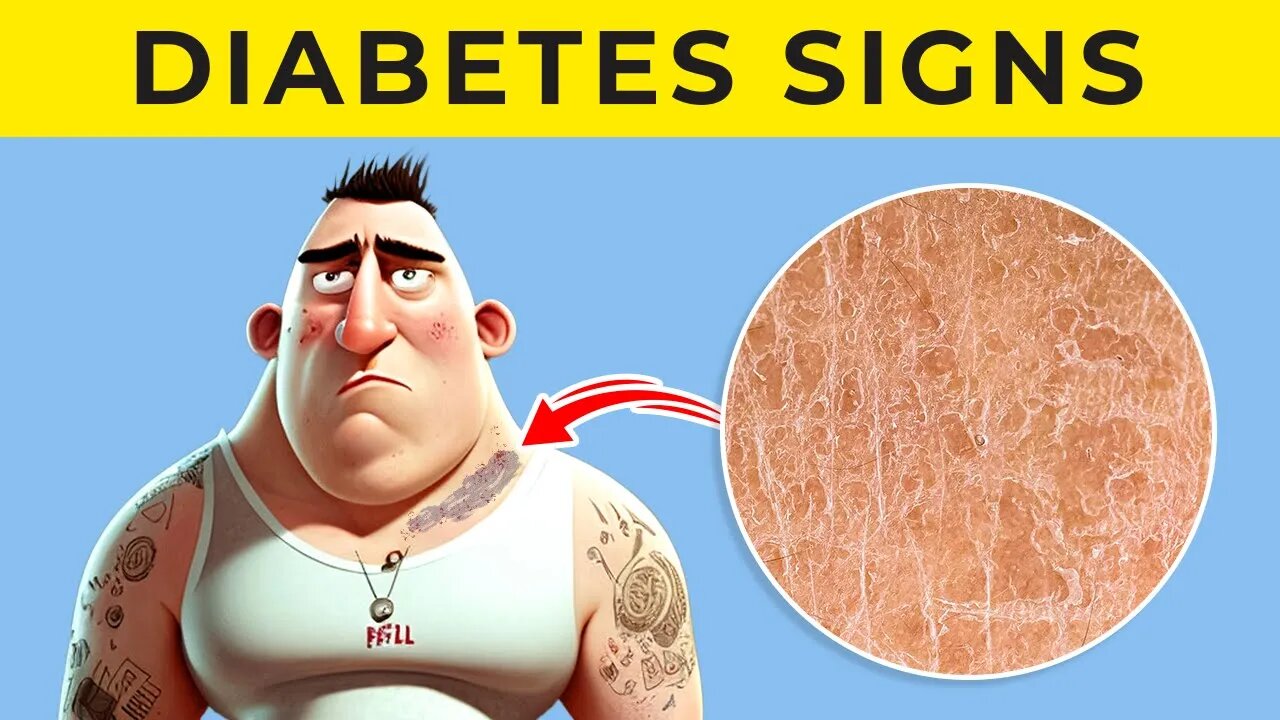Premium Only Content

7 MAJOR Signs And Symptoms Of Diabetes | HOW To Detect!
Diabetes can have numerous impacts on the body, including the skin. Some skin changes are early signs of the condition and can serve as indicators of the disease. The following are the signs and symptoms of diabetes:
Diabetes can affect many parts of our body, including our skin. Many skin changes are visible in the later stage of diabetes but some changes are an early indicator of diabetes.
Signs of diabetes:
1. Acanthosis Nigricans:
It is a dark patch of velvety skin on the back of your neck, armpit or groin areas. It is commonly seen in obese people.
2. Skin Tags:
Numerous skin tags with blackish discolouration of skin could be a sign of high blood glucose level. These growths are most common on the eyelids, neck, armpit, and groin region
3. Necrobiosis Lipoidica:
This skin condition often begins as small raised solid bumps that look like pimples. As it progresses, these bumps turn into patches of swollen and hard skin. The patches can be yellow, reddish, or brown in colour.
You may also notice:
- The surrounding skin has a shiny porcelain-like appearance
- Visible blood vessels
- Itchy and painful skin
- The skin disease goes through cycles where it is active, inactive, and then active again
The medical name for this condition is Necrobiosis Lipoidica. If you see this type of skin lesion, get tested for diabetes
4. Digital Sclerosis (skin hardening or thickening)
You can see thick, tight, waxy skin that develops on the back of the hands. The finger joints stiffen and become difficult to move.
Controlling blood glucose level and physical therapy may be helpful in this situation.
5. Diabetic Dermopathy:
This skin condition causes spots that create a barely noticeable depression in the skin. It’s common in people who have diabetes. It usually forms on the shins.
6. Bullosis Diabeticorum:
People with diabetes may see a large blister, a group of blisters, or both. The blisters tend to form on the hands, feet, legs, or forearms and look like the blisters that appear after a serious burn. However, these blisters are not painful.
7. Eruptive-Xanthomatosis:
Eruptive-xanthomatosis is commonly seen in uncontrolled diabetes. When these bumps appear, they often look like pimples. Usually seen on the buttocks, thighs, crooks of the elbows, or backs of the knees.
8. Frequent skin infections:
People who have diabetes tend to get frequent skin infections. It could be bacterial or fungal.
Bacterial infections commonly seen in diabetes are
- Styes,
- Folliculitis or infection of the hair follicle
- Carbuncles or deep infections of the skin and the tissue underneath
Fungal infection is also very common in diabetes.
Common fungal infections include jock itch, athlete's foot, ringworm (a ring-shaped itchy patch), and vaginal infection that causes itching.
9. Open sores and wounds:
Having high blood sugar (glucose) for a long time can lead to poor circulation and nerve damage. This makes it hard for your body to heal wounds & especially true on the feet. These open wounds are called diabetic ulcers.
If you have diabetes, you should check your feet every day for sores and open wounds.
10. Itching:
Localized itching is often caused by diabetes. It can be caused by a yeast infection, dry skin, or poor circulation.
If you notice one or more of the above mentioned signs then its important that you correlate with other risk factors like obesity, family history of diabetes or having a sedentary lifestyle. Just having only one sign cannot be directly linked to diabetes. It can be associated with other diseases also.
But if you are 40+ and fall into this high risk groups then it’s better to check blood sugar level on a regular basis. Early detection of diabetes and precautionary measures can prevent many future complications
It is important to keep in mind that having one or more of these signs does not necessarily mean you have diabetes, as these symptoms can also be associated with other conditions. If you are 40 years or older and fall into a high-risk group, it is recommended that you have your blood sugar levels regularly checked. Early detection and preventive measures can help avoid potential complications in the future.
Medical Disclaimer: Wellness 1st does not offer medical advice and should not be used as a substitute for professional medical judgment. The information we provide is for educational purposes only. Only a licensed healthcare professional can determine the need for medical services and the appropriate type of care for a patient. If you have any questions about your health, always consult with a physician or other qualified healthcare provider.
#diabetes
#diabetescare
#diabetessymptoms
-

BonginoReport
8 hours agoElon’s Petty Move Threatens GOP’s Bright Future - Nightly Scroll w/ Hayley Caronia (Ep.88)
10.6K8 -
 LIVE
LIVE
Dr Disrespect
7 hours ago🔴LIVE - DR DISRESPECT - INSANE WARZONE CHALLENGES! DOMINATING 2025 HYPE
1,162 watching -
 24:53
24:53
Preston Stewart
4 hours agoTrump Arms Ukraine
21 -
 LIVE
LIVE
LFA TV
20 hours agoLFA TV ALL DAY STREAM - FRIDAY 7/11/25
1,260 watching -
 1:13:26
1:13:26
Kim Iversen
3 hours agoDershowitz Says He Knows FOR A FACT The Names On The Epstein List
19.1K27 -
 LIVE
LIVE
Nerdrotic
3 hours ago $7.53 earnedSuperman's James Gunn DROPS! Comic Book Movies Saved? WOKE Black Superman | Friday Night Tights 362
2,730 watching -
 42:44
42:44
American Minute with Bill Federer
1 hour ago $1.03 earnedHistory You Need to Know with Dr. Bill Federer
7.37K3 -
 32:52
32:52
Clownfish TV
4 hours agoI Watched SUPERMAN So You Don't Have To...
3.5K8 -
 1:36:33
1:36:33
Roseanne Barr
4 hours ago"The Woman Who Raised Me" | The Roseanne Barr Podcast #106
34.8K12 -
 22:32
22:32
Neil McCoy-Ward
5 hours ago🚨 EUROPE HAS BEEN PUT ON NOTICE!!!
12.5K10